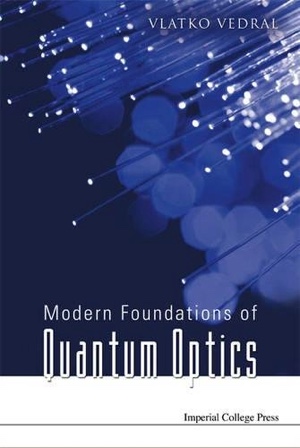The B-M-V Effect
I’d like to tell you about testing quantum gravity in the lab. It is possible to do so and this is surprising because gravity is by far the weakest of all the forces (I might devote another blog to arguments why gravity can never be tested to be quantum!). But before I proceed, I’ll have to do a bit of explaining regarding how the concept of force itself arises in quantum physics.
As I’ve mentioned in the previous blog, force is the key idea in classical physics. All particles move because they are acted on by forces. We push an object and it moves and this is because the atoms of our hand exert a force on the atoms of the object. The force in classical physics is a primary notion and classical physics does not offer a deeper reason for its existence. Why does the Earth move around the Sun? Because the gravitational pull of the Sun causes the Earth to move this way. How does gravity do that? The answer, my friends, is blowing in the wind. It simply does not exist in classical physics. It’s just so.
Classical physics would acknowledge that there are different kinds of forces, such as the electrostatic one (by which two electrons repel one another) the magnetic force (which describes how magnets interact), gravitational (which is basically responsible for the large-scale dynamics in the universe) and so on. But the mechanism behind any of the forces was not known before quantum physics. What was also not know is how many different types of forces there are (we still don’t, but we have a good working hypothesis I’ll be talking about here).
Don’t get me wrong. There were many proposals for how gravity works. The most ingenious one perhaps was due to Le Sage and it imagined that the universe is pervaded by invisible particles which travel in all possible directions. However, when they encounter an object like the Sun, they are either reflected or absorbed. Therefore, the Sun acts like a shield and how many particles it prevents from reaching the Earth depends on the square of the distance (it’s the effective angular area). In that sense, there are more particles pushing the Earth towards the Sun then away since some of the latter ones are shielded by the Sun.
This theory presents a mechanism that naturally accounts for the inverse square law for the strength of gravity with distance (the same is true for electrostatic forces, a law discovered by Coulomb). Unfortunately, the mechanism predicts some other effects that are not observed in reality. For instance, the Earth should have more gravitational particles hitting it from the front than the back, in the same way that you experience more raindrops on your face than on the back of your head when you are running in the rain. This would imply that there is a frictional force acting against the movement of the Earth, which should ultimately slow the motion of our planet. No one has ever seen anything like that (which is just as well since we would gradually end up spiralling into the Sun!).
There were other ideas around, but the most fruitful one turned out to be due to Faraday and (perfected by) Maxwell who took classical forces as far as possible without the help of quantum physics. Their idea was to say that when you put a charge somewhere in space it generates a field around itself which propagates into the space (much as a water wave spreads out when you throw a stone into a pond). This propagating wave then acts on another charge some distance away (again, much as the water wave would affect a distant water flower in the pond and cause it to move up and down). In general, all electrical charges create fields and these fields affect other charges which move it response.
There is an interesting maritime analogy here which comes from a real-life story about the warning issued to French sailors (a few centuries or so ago, well before any idea of fields in physics 😊) that two ships which are docked in a harbour parallel to each other may start to approach each other (and may ultimately crash into each other) due to their small oscillations up and down in the water. The explanation of this effect, which is remarkably similar to how we describe forces between particles coupled through fields, lies in the fact that the waves that exist between the two ships (representing a field) actually cancel each other out, while the waves going away from the ships don’t. This means that, due to the conservation of momentum (Newton’s action and reaction), the ships recoil towards each other and this is the origin of the maritime force.
The key idea behind the field is to make forces act in a causal way, namely that the electromagnetic waves propagate at the speed of light. The same is true for the gravitational field. So, if the Sun was to vanish now, it would take about 8 minutes for us to feel the (devastating) effect. This is how long it takes the light (and gravity) from the sun to reach us. In other words, the Sun we see now, is actually that Sun that’s eight minutes old with respect to us.
So, fields carry forces and are responsible for one object affecting another one seemingly at a distance.
What’s more, the lines of filed emanate from the charge isotropically, i.e., the same in all direction. There are therefore more lines closer to the charge than further away from it. It is this density of the lines of the field that is proportional to the strength of the force. And, just like the imaginary particles proposed to explain gravity, the density of the lines of force drops off with the square of the distance (since the same number of lines penetrates a larger and larger area as we move away from the charge). This is the way in which Gauss phrased the Coulomb law.
Therefore, the idea to explain gravity with particles whose flux is blocked by various astronomical objects was not completely crazy and certainly contains some germs of truth.
But now, fast forward to quantum mechanics. There are no forces; it’s all about energy (thanks to Hamilton, as in the previous blog). Things move in a way to minimize energy. As I said in my previous blog, when you put a charge into the electromagnetic quantum vacuum, it creates photons. When you have two electrons, then each creates their own cloud of photons. This is like two stones thrown into a pond, or better still, like two water lilies oscillating up and down in a pond. Each of the photons of one electron interacts with the other which increases the energy of the whole. To decease the energy the electrons have to move away from one another and this is how quantum physics explains the repulsion between two like charges (the opposite charges would instead minimize energy by coming closer to one another).
You can see that the maritime analogy is appropriate in quantum physics too!
Finally, we come to quantum gravity. Putting a mass into a superposition of two different locations would create two different ripples in the gravitational field, one in each location. Now, if gravity was classical, we would either have one ripple or the other, but not both. Only if gravity is quantum could both ripples propagate at the same time.
My colleague Chiara Marletto (the M in the BMV) and I, and – independently – another colleague of mine Sougato Bose (the B in the BMV), had the following idea. What if we put another mass in a superposition of two different location as well? If gravity is quantum, the two masses would become entangled. If not, they wouldn’t.
In fact, Chiara and I have a general argument that makes very few assumptions (certainly satisfied by Einstein’s general relativity), such as that the interactions are local in nature, and that they must be capable of supporting the interoperability of information (all channels of information with the same capacity are interchangeable – see the next paragraph). This argument immediately implies that, if in an experiment the masses become entangled through gravity, then gravity has to have some quantum components.
An intuition of the following type is appropriate. Suppose that you think of quantum and classical physics in terms of information theory (as I like to do – see my “Decoding Reality”). Quantum physics can encode much more information than classical. In order to entangle two quantum bits of information (like the two spatially superposed masses), we need a channel between them (gravity) whose capacity is at least as big as that of a qubit. That’s why, if gravity was entirely classical, the qubits would not entangle, as the channel connection them would not have enough capacity.
My bets are that the masses would entangle in an actual experiment (and in another blog I will tell you more about the practical difficulties we are facing), but I ought to be careful here since there are some heavyweights betting against it (my colleague at Oxford, and a physics Nobel Laureate, Sir Roger Penrose, for instance). Anyway, time will tell.
Of course, the same is true for electrical charges, namely that we could entangle two of them by the intermediate electromagnetic field. This would be a proof that the electromagnetic field is quantum (in fact, a controlled not gate between trapped ions is done exactly like this), but we already have many other bits of evidence that this is so (starting with the blackbody radiation, the photoelectric effect and the Compton scattering, all of which were well over 100 years ago).
In fact, the other two fundamental forces (weak and strong) are quantum too (the Standard Model has unified them with the electromagnetic forces), so it would make sense for gravity also to be quantum. The BMV argument could be used to test any other new fundamental force (the fifth force?), should such things be discovered in the future.
Sign up to my substack
BOOKS
ASK ME ANYTHING!
If you'd like to ask me a question or discuss my research then please get in touch.





